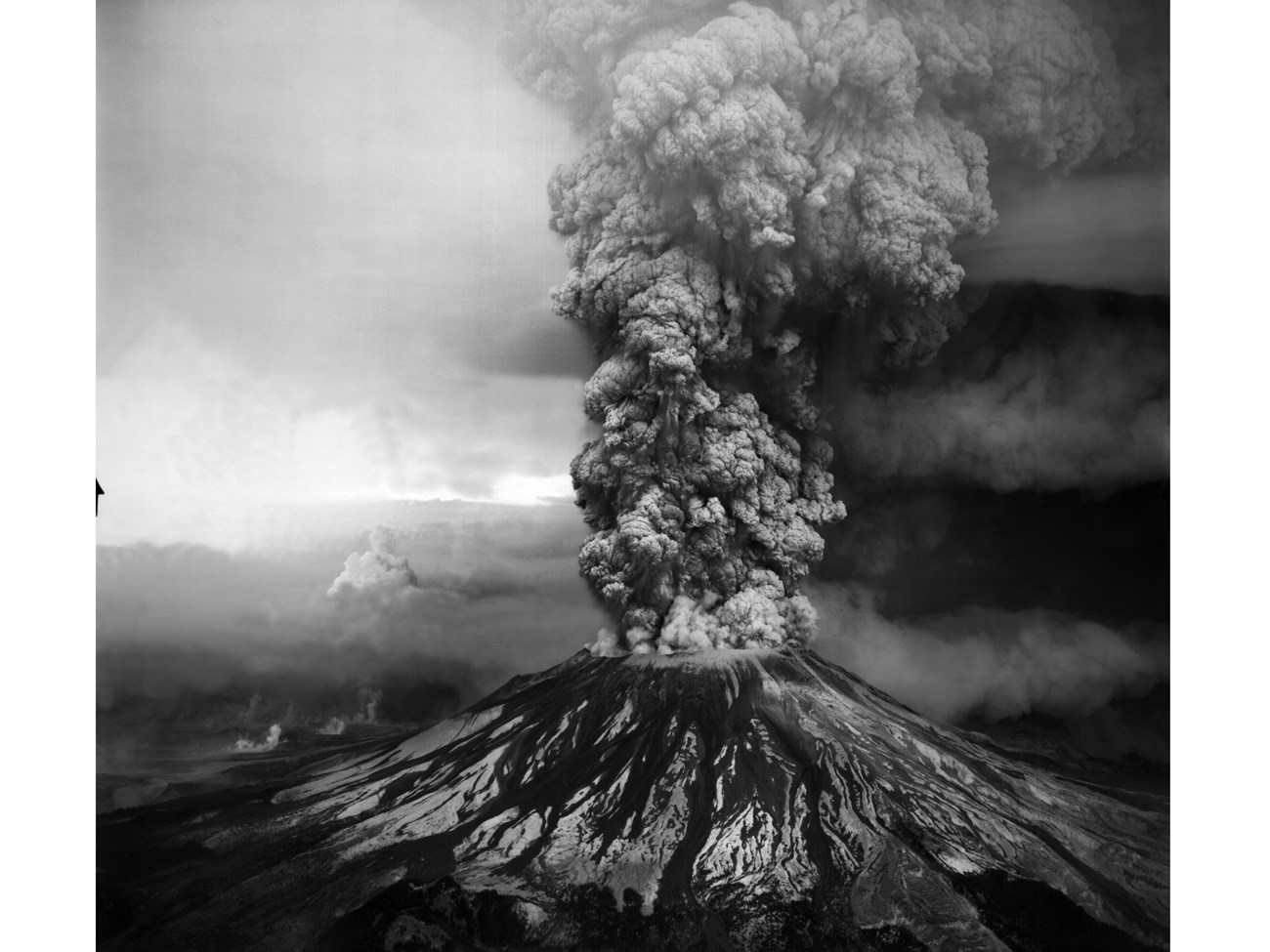Part of a series of articles titled Volcanic Eruption Styles.
Previous: Sub-Plinian Eruptions
Next: Ultra-Plinian Eruptions
Article

USGS photo.
Plinian and Sub-Plinian eruptions differ primarily on the basis of intensity, although Plinian events may consist of more silicic magmas than Sub-Plinian ones.
Plinian eruptions are extremely explosive eruptions, producing ash columns that extend many tens of miles into the stratosphere and that spread out into an umbrella shape. These large eruptions produce widespread deposits of fallout ash. Eruption columns may also collapse due to density to form thick pyroclastic flows. They may also trigger lahars on composite volcanoes.
This style of eruption is named for the eruption of Vesuvius in 79 CE which was witnessed by Pliny the Elder.
The May 18, 1980 eruption of Mount St. Helens was Plinian.
The 1912 eruption of Novarupta in Katmai National Park and Preserve also was Plinian. It produced an eruption column that rose to a height of more than 100,000 feet (30 km) and spread over most of southern Alaska and the Yukon Territory. So much magma was erupted that it lead to a 1.5-mile wide (2.5-km) caldera. The eruption lasted nearly three days. It also produced voluminous pyroclastic flows.
Typical magma composition: silicic (rhyolitic)
Description: Paroxysmal (particularly violent)
Eruption Products: tephra, pumice, fallout ash, pyroclastic flows, lahars
National Park examples: Novarupta in Katmai National Park and Preserve
Aniakchak National Monument & Preserve (ANIA), Alaska—[ANIA Geodiversity Atlas] [ANIA Park Home] [ANIA npshistory.com]
Crater Lake National Park (CRLA), Oregon—[CRLA Geodiversity Atlas] [CRLA Park Home] [CRLA npshistory.com]
Katmai National Park and Preserve (KATM), Alaska—[KATM Geodiversity Atlas] [KATM Park Home] [KATM Volcanoes] [KATM npshistory.com]
Mount Rainier National Park (MORA), Washington—[MORA Geodiversity Atlas] [MORA Park Home] [MORA npshistory.com]
USGS Alaska Volcano Observatory—Novarupta (in Katmai National Park and Preserve)
USGS Cascades Volcano Observatory—Mount St. Helens
Part of a series of articles titled Volcanic Eruption Styles.
Previous: Sub-Plinian Eruptions
Next: Ultra-Plinian Eruptions
Last updated: April 14, 2023